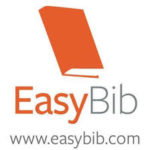
How to Teach English for Academic Purposes
Students have a variety of different goals for learning English.
For some, it’s using English in the business world. Others seek to learn English for their education. That’s why English for Academic Purposes (EAP) classes are so popular.
In this post, I’ll explain what EAP is, and give you some tips and resources for teaching EAP classes.
Contents
- What Is EAP?
- What Are EAP Students Like?
- What Should an EAP Class Look Like?
- Tips for Teaching English for Academic Purposes
- Courses and Resources for EAP Training and Teaching
- Building an Effective EAP Syllabus
- Unit 1: Different Structures of University
- Unit 2: Student Life
- Unit 3: Life Outside the Classroom
- Unit 4: Grammar and Academic Grammar Norms
- Unit 5: Listening Comprehension
- Unit 6: Note-taking Skills
- Unit 7: Public Speaking and Presentations
- Unit 8: Academic Writing
- Unit 9: Plagiarism (References, Paraphrasing and the Bibliography)
Download: This blog post is available as a convenient and portable PDF that you can take anywhere. Click here to get a copy. (Download)
What Is EAP?
English for Academic Purposes (EAP) is for students who intend to use English in educational settings in the future.
Since they have a specific goal, they aren’t necessarily seeking native-speaker-like fluency or complete knowledge of the English language. They aren’t looking to take general English classes or comprehensive English classes.
For teachers, this means that EAP classes should focus on specific skills, the skills students will need in their academic futures.
These skills might include:
- Taking language exams such as the TOEFL and the TOEIC to get into college
- Taking college entrance exams
- Listening to college lectures
- Being able to read a college text
- Writing papers for university classes
In some cases, students might intend to complete a degree fully online, in which case they might only be interested in reading and writing in English and the skills they need to use it via the internet.
What Are EAP Students Like?
Since your EAP students have specific goals, their preferences might be a bit different from your typical ESL students. They may be less interested in games and overall English fluency or feel like they don’t have time for these things.
They are often adults or at least high school students. And they often have some experience with the English language already. That is to say, they aren’t beginners when it comes to English.
Most likely, they’ll be in your class to continue a language education rather than start one, to take what they know to the next level.
What Should an EAP Class Look Like?
EAP classes should have three characteristics:
- First, they should use material that is not designed or modified for ESL students.
- Second, EAP classes should have goals that will serve a purpose in students’ academic futures.
- Thirdly, students should be able to choose, to some measure, what they study in class.
So how does the ESL teacher go about designing and running their EAP classes? Here are some suggestions for making English for Academic Purposes just right for your students.
Tips for Teaching English for Academic Purposes
1. Use authentic materials.
Choose articles for your students that come from newspapers rather than an ESL site. For example, you can subscribe for full access to The New York Times and draw from the variety of articles published there. With sections like science, health, business and travel, you’ll definitely be able to find content that corresponds to your students’ desired fields of study.
If you use print or digital publications often enough in your class, you may also want to consider subscriptions through Magazine Line to magazines such as magazines like The Wall Street Journal, The Economist and Discover magazine.
This is also a great source to recommend to your students, as they offer big discounts on a wide variety of magazines that may be relevant to your students’ chosen career paths (plus possible additional discounts for college students).
You could have your students try the following:
- Read short stories written for native speakers
- Listen to songs sung in English.
- Try a podcast on a topic that interests your students
2. Use authentic classroom materials.
When you’re choosing material for your classes such as textbooks, choose those that are not designed for ESL students, that is, not written or developed for language studies.
Your EAP students won’t get specially-designed textbooks when they attend college, so now is the time to get them ready. Consider using a freshman English text rather than an ESL writing book or choosing a popular college textbook, such as “The Art of Public Speaking” by Stephen E. Lucas.
There are several places where they could buy college textbooks online.
3. Use real college lectures in class.
Your students are going to be attending college, and that means sitting in college lectures.
Give them a heads-up by practicing with actual lectures while they’re still in your EAP class. You can find plenty of lectures on YouTube from actual professors. Just put “university lecture” in the search box.
You can even access free lectures from well-known universities like Yale and Harvard online. Play them for your students and then use them to practice taking notes, for listening comprehension and for research assignments.
Open Culture also offers links to over 1200 online courses students can listen to for free.
4. Give assignments similar to those students will receive in college.
It’s never too early to start giving college-like assignments to EAP students. Whenever possible, give them assignments similar to those they’ll receive in their education to come.
Have students write research papers, read entire novels or complete projects in student groups. After students have practiced with assignments in their EAP classes, they’ll be more successful when they receive the same types of assignments in their college courses.
5. Let students direct their own learning.
Give students some freedom to make their own educational goals.
You might have them decide what topics you cover in class, what types of assignments they’ll do or how they’ll study to accomplish those assignments. This means that every EAP class you teach will be slightly different from every other, but all of your students are slightly different from each other, too.
By giving them a choice in what and how they learn, you’ll be meeting your students’ needs in greater depth.
Courses and Resources for EAP Training and Teaching
If you’re looking for material that’s specific to helping you prepare and design your curriculum, check out the resources below.
EAP Books
- “English for Academic Purposes: A Comprehensive Overview”: This is a great resource for English teachers who are just entering the field of EAP teaching. It covers the basics and introduces some of the more common practices and theories in the discipline.
- “English for Academic Purposes: A Guide and Resource Book for Teachers”: This book gets into more detail. It gives a broad overview of EAP, but then delves into study skills, methodology and course design.
EAP Training Courses
Think you need some additional training in EAP? Good news. There are several courses and training programs available. Two of the best ones are:
- BALEAP: This company is one of the premier companies that provide EAP teacher training. It offers several short, intensive teacher training courses in the field, offered at various locations around the United Kingdom.
- Oxford TEFL Teacher Training: Here, you can complete an online, 30-hour EAP teacher training course over six weeks.
Building an Effective EAP Syllabus
Once you’ve gathered your resources and you’re ready to go, it’s time to build a comprehensive syllabus for teaching English for Academic Purposes.
That is, of course, unless you’re working with a language school that already has a program in place. Otherwise, you’ll need to think about some of the common areas covered in EAP.
The following is a general syllabus of topics to cover in your EAP lessons. Feel free to tailor it to fit your students’ needs and expectations.
Unit 1: Different Structures of University
As you probably already know, academic institutes vary from country to country. Even in the English-speaking world, there are several differences within higher education systems. Take time to explore the various systems, and compare and contrast what students can expect at different institutes.
- The American University System: American institutes of higher education are divided into the following categories: college, technical school and university. Each one is a little different. Moreover, education can be anywhere from two years for an associate degree to four years for a bachelor’s degree. Master’s degrees can take anywhere from one year to three years depending on the subject matter, and doctorates can last as long as seven years.
- The Canadian System: The Canadian university system is very similar to the United States. However, they have three academic semesters per year. They have both technical and community colleges, as well as larger, more diversified universities that specialize in liberal arts and STEM research.
- The Australian System: In Australia, there are a total of 43 universities. This number includes private, public and international institutions. In general, the course of study is almost always three years and the structure of courses is based on the British system of education. Some institutions will allow you to seek honors by taking a fourth year.
- The British System: Unlike the United States, there is a major difference between colleges and universities in the United Kingdom. Colleges are educational institutes that prepare students who wish to seek an undergraduate degree from a university—think of them as prep schools. Once students enroll in a university, it typically takes them three years to complete an undergraduate degree. A master’s degree can either be one year or two years, while doctorates often take three years.
Unit 2: Student Life
Student life experiences will vary depending on where students choose to study. It’s important that students think about how the way of life and culture may be different from that of their home country.
For example, what can students expect in dorms in the United States versus in Australia?
Other differences include study habits; for example, how many projects, papers, assignments and group work is there expected to be throughout the semester?
Unit 3: Life Outside the Classroom
While studying abroad or working in English-speaking academia, students need the skills to help themselves after they’ve left the walls of your classroom.
Make sure your students are competent in using the dictionary and thesaurus, including how to look up the root of a word, how to recognize and check prefixes and suffixes, as well as using contextual clues to determine the meaning of a word. Make sure to help them also learn how to elevate their writing with the use of synonyms.
Another important skill for EAP students to master is recognizing common English pronunciations. They will often come across words while reading and studying they don’t know.
Being able to take an educated guess at how the word is pronounced will help them to succeed in comprehension and integrate new words into their vocabulary. Go over the phonetic alphabet with them, so if they need to look up a word in the dictionary they can easily pronounce it. You may also want to spend some time reviewing prefixes and suffixes.
Unit 4: Grammar and Academic Grammar Norms
Remember that ideally, your students should have a solid grammar foundation already, but there’s no harm in doing a review. The amount of time you spend on this will depend on you and your students. In some cases, you may need to review basic grammar, such as the main verb tenses.
Use real-world materials, such as academic articles and papers, to showcase common grammar structures in academia, like the passive voice versus the active voice.
Remember, the passive voice is used in scientific studies, whereas the active voice is preferred in most arts and humanities subjects. This type of close reading of academic work will also help students become more familiar with the tone and style of academic writing.
Unit 5: Listening Comprehension
Students planning to study abroad must hone their listening comprehension skills. Listening to an ESL teacher speak is quite different than sitting in a lecture hall full of native English-speaking students listening to a professor summarize Plato’s theories.
Have students listen to various lectures, checking their comprehension with pointed questions. Use the lecture material mentioned above. TED Talks can also be a useful tool for this type of exercise.
Unit 6: Note-taking Skills
Note-taking is a practical skill that is beneficial for EAP learners. Not all university lecturers allow students to record their classes, so being able to take notes while listening to presentations is essential.
Give students ample time to experiment and figure out how they can best keep notes for themselves. Maybe they want to translate into their own language as they go, or perhaps, they like to use an English shorthand.
A great way to practice this is to play or give a short lecture and ask students to keep notes. At the end of the lecture, ask comprehension questions about specific numbers and facts used in the lecture. Can the students accurately summarize and recall the information?
Unit 7: Public Speaking and Presentations
Giving presentations is one of the most common assignments at university. English language students need to be prepared to speak in front of audiences.
For EAP students, you should outline the proper way to structure an oral presentation and advise on how to use and incorporate PPTs and other visual aids. Also, make sure you give students a chance to practice giving speeches and presentations on their own.
You might also want to encourage them to use note cards to keep themselves on track. This is great for helping the speaker stay organized, which is especially important for second-language English speakers.
For example, if a student has trouble with one particular word that they need to use in their speech or presentation, they can write it on a note card phonetically for reference.
Unit 8: Academic Writing
Writing is an important component of academia. Before studying abroad or continuing their education at a higher level in English, students need to be able to successfully design a thesis statement, outline an essay and write it.
 Depending on the subject students plan on studying, you may wish to instruct them on writing a persuasive essay or research paper.
Depending on the subject students plan on studying, you may wish to instruct them on writing a persuasive essay or research paper.
There are several resources online that can help you identify the key points of teaching academic writing, like the International Student’s “General Essay Writing Tips,” which explores the basic concepts and practices of essay writing.
Unit 9: Plagiarism (References, Paraphrasing and the Bibliography)
It’s imperative for students to become familiar with the plagiarism rules and regulations of the country they plan to study in. For example, in the United States, the consequences of plagiarism, even if it’s unintentional, can be severe.
 Teach the students how to properly reference the work of other people in their own essays and papers, depending on where they are planning to study. Review how to create a bibliography. There are several resources online that provide guidelines and even allow you to cite papers, like EasyBib.
Teach the students how to properly reference the work of other people in their own essays and papers, depending on where they are planning to study. Review how to create a bibliography. There are several resources online that provide guidelines and even allow you to cite papers, like EasyBib.
However you decide to go over plagiarism, make sure that you properly inform your students so they don’t make any inadvertent mistakes when studying abroad.
The more practical you make your classes, the more prepared they’ll be for successful academic futures.
Download: This blog post is available as a convenient and portable PDF that you can take anywhere. Click here to get a copy. (Download)




